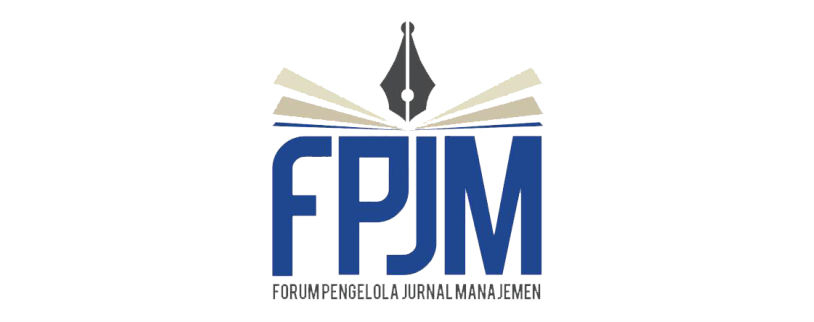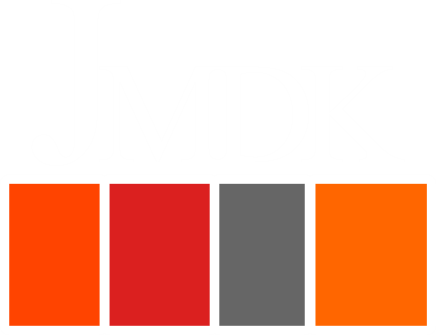Market Demand Mediates the Impact of Product Quality and Innovation on Entrepreneurial Performance
DOI:
https://doi.org/10.26905/jmdk.v13i1.15290Keywords:
Business Actors, Clothing Convection, Entrepreneurial Performance, Market Demand, Product Innovation, Product QualityAbstract
Market demand plays a crucial role in mediating the relationship between product quality, innovation, and entrepreneurial performance. Understanding how market demand influences this dynamic is essential for business owners to strategically enhance their competitiveness and long-term success. This research aims to examine the impact of product quality and product innovation on the performance of clothing convection business owners through market demand in home industries in Jurangmangu. Given the large sample size, path analysis is employed to assess both direct and indirect effects. The research population consisted of 215 home industry clothing business owners in Jurangmangu, with a sample size of 168 participants. The findings indicate that: (1) Product quality and product innovation directly affect market demand; (2) Product quality and product innovation have a direct effect on the entrepreneurial performance of business owners; (3) Market demand significantly influences entrepreneurial performance; (4) Product quality and product innovation do not indirectly affect entrepreneurial performance through market demand. High-quality products increase consumer satisfaction, foster brand loyalty, and contribute to long-term business growth. Innovative products, including creative designs and advanced production technologies, capture emerging trends and highlight local culture, offering a competitive advantage even in the face of challenges such as environmental pests.
Downloads
References
Al-Haddad, S., & Kotnour, T. (2015). Integrating the organizational change literature: A model for successful change. Journal of Organizational Change Management, 28(2), 234–262. https://doi.org/10.1016/j.jbusres.2019.01.063
Alhassan, H. A., Appiah, N. A., & Ankai, B. K. (2023). Quality attributes: consumers’ evaluation of tailored clothing in Ghana. Journal of Marketing Studies, 6(1), 1-24. DOI:10.47941/jms.1185
Anindita, P. S., & Toha, M. (2021). Strategic repositioning for convection business case study: Ar vendor. The Indonesian Journal of Business Administration, 2(9), 1084-1091. https://doi.org/10.47405/mjssh.v6i9.101
Bhandari, N., Garza-Reyes, J. A., Rocha-Lona, L., Kumar, A., Naz., & Joshi, R. (2022). Barriers to sustainable sourcing in the apparel and fashion luxury industry. Sustainable Production and Consumption, 31, 220-235. https://doi.org/10.1016/j.spc.2022.02.007
Cajal-Grossi, J., Prete, D. D., & Macchiavello, R. (2023). Supply chain disruptions and sourcing strategies. International Journal of Industrial Organization, 90,103004. https://doi.org/10.1016/j.ijindorg.2023.103004
Chai, J., Kang, Z., Yan, Y., Lou, L., Zhou, Y., & Fan, J. (2022). Thermoregulator clothing with temperature-adaptive multimodal body heat regulation. Cell Reports Physical Science, 3(7), 100958. https://doi.org/10.1016/j.xcrp.2022.100958.
Christensen, C.M. (1997). The innovator's dilemma: When new technologies cause great firms to fail. Boston, Massachusetts, USA: Harvard Business School Press.
Daniyan, I., Adeodu, A., Mpofu, K., Maladzhi, R., Katumba et al., 2023). Application of lean Six Sigma methodology using DMAIC approach for the improvement of bogie assembly process in the railcar industry. Heliyon, 8(3), e09043. https://doi.org/10.1016/j.heliyon.2022.e09043
Ding, C., Zhang, R., & Wu, X. (2023). The impact of product diversity and distribution networks on consumption expansion. Journal of Business Research, 161, 113833, https://doi.org/10.1016/j.jbusres.2023.113833
Dziallas, M., & Blind, K. (2019). Innovation indicators throughout the innovation process: An extensive literature analysis. Technovation, 80-81, 3-29. https://doi.org/10.1016/j.technovation.2018.05.005
Ekman, P., Röndell, J. G., Anastasiadou, E., Kowalkowski, C., Raggio, R. D., & Thompson, S. M. (2021). Business actor engagement: Exploring its antecedents and types. Industrial Marketing Management, 98, 179-192. https://doi.org/10.1016/j.indmarman.2021.08.009
Faccia, A., Roux, C. L. L., & Pandey, V. (2023). Innovation and e-commerce models, the technology catalysts for sustainable development: The emirate of Dubai case Study. Sustainability, 15(4), 3419. https://doi.org/10.3390/su15043419
Fajriana, M. M. (2021). How are business actors responsible for consumer losses in default cases? an analysis of indonesian consumer protection law. Journal of Law and Legal Reform, 2(2), 187-196. https://doi.org/10.15294/jllr.v2i2.46614
Farida, A., & Setiawan, D. (2022). Business strategies and competitive advantage: The role of performance and innovation. Journal of Open Innovation: Techonology, Market, and Complexity, 8(3), 163. https://doi.org/10.3390/joitmc8030163
Flynn, B. B., Schroeder, R. G., Sakakibara, S. (2007). The impact of quality management practices on performance and competitive advantage. Decision Sciences, 26(5), 659-691. DOI:10.1111/j.1540-5915.1995.tb01445.x
Gao, L. (2023). The impact of consumer behavior and product innovation on enterprise R&D decisions in a macroeconomic environment. Frontiers in Business, Economics and Management, 11(2), 262–265. https://doi.org/10.54097/fbem.v11i2.12620
Garcia-Ortega, B., Galon-Cubillo, J., Llorens-Montes., & Miguel-Molina, B. (2023). Sufficient consumption as a missing link toward sustainability: The case of fast fashion. Journal of Cleaner Production, 399, 136678. https://doi.org/10.1016/j.jclepro.2023.136678
Gunawan, D., Nainggolan, R., & Effendi, L. V. (2024). The effect of product quality and price on customer loyalty through customer satisfaction. Jurnal Entrepreneur dan Entrepreneurship, 13(1), 39–52. https://doi.org/10.37715/jee.v13i1.4379
Hair Jr, J. F., Matthews, L. M., Matthews, R. L., & Sarstedt, M. (2017). PLS-SEM or CB-SEM: Updated guidelines on hich methods to usc. Int J. Multivariate Data Analysis, 1(2), 107-123.
Harsanto, B., Primiana, I., Sarasi, V., & Stayakti, Y. (2023). Sustainability innovation in the textile industry: A Systematic Review. Sustainability, 15(2), 1549. https://doi.org/10.3390/su15021549
He, J., Lu, Y., Chen, S., & Lv, J. (2021). On dual performance of protective clothing composites with different air gaps under hot steam exposure. Case Studies in Thermal Engineering, 26, 101128. https://doi.org/10.1016/j.csite.2021.101128
Hermundsdottir, F., & Aspelund, A. (2021). Sustainability innovations and firm competitiveness: A review. Journal of Cleaner Production, 280(1), 124715. https://doi.org/10.1016/j.jclepro.2020.124715
Herold, P. I., & Prokop, D. (2023). Is fast fashion finally out of season? Rental clothing schemes as a sustainable and affordable alternative to fast fashion. Geoforum, 146, 103873. https://doi.org/10.1016/j.geoforum.2023.103873.
Ilyas, N. F., & Irawan, A. (2021). Business feasibility towards clothing convection: A case study of raiment. Malaysian Journal of Social Sciences and Humanities (MJSSH), 6(9), 545-560. https://doi.org/10.47405/mjssh.v6i9.1018
Ikram, M. (2022). Transition toward green economy: Technological innovation's role in the fashion industry. Current Opinion in Green and Sustainable Chemistry, 37, 100657. https://doi.org/10.1016/j.cogsc.2022.100657
Joshi, A., Psikuta, A., Bueno, M-A., Annaheim, S., Rossi, R. M. (2021). Effect of movement on convection and ventilation in a skin-clothing-environment system. International Journal of Thermal Sciences, 166, 106965. https://doi.org/10.1016/j.ijthermalsci.2021.106965
Jumriani, J., Syaharuddin, S., Abbas, E. W., Mutiani, M., & Handy, M. R. N. (2021). The traditional clothing industry of Banjarmasin Sasirangan: A portrait of a local business becoming an industry. Journal of Socioeconomics and Development, 4(2), 236-244. https://doi.org/10.31328/jsed.v4i2.1597
Kraus, S., Burtscher, J., Vallaster, C., & Angerer, M. (2022). Sustainable entrepreneurship orientation: A reflection on the interplay between entrepreneurial orientation and environmental sustainability. Journal of Cleaner Production, 331, 129997. https://doi.org/10.1016/j.jclepro.2021.129997
Krishna, K., T. M., M R., K. (2022). Automation in garment manufacturing cut to pack process. International Journal of Engineering Management and Economics, 4(6):385-400. DOI:10.35629/5252-0406385400
Lin, G., Chen, J. L., Li, G., & Song, H. (2024). Substitution between sharing accommodation and hotels: A behavioral economic demand curve analysis. Annals of Tourism Research, 104, 103716. https://doi.org/10.1016/j.annals.2023.103716.
Lilya, S. L. S., & Pasaribu, R. D. (2024). The influence of digital literacy and relative advantage on e-commerce adoption through digital training and mentoring among MSMEs in Jakarta. International Journal of Science, Technology & Management, 5(5), 1266-1276.
Mohamud, I. H., Kafi, Md. A., & Shahron, S. A. (2023). The role of warehouse layout and operations in warehouse efficiency: A literature review. Journal Européen des Systèmes Automatisés, 56(1), 61-68. DOI:10.18280/jesa.560109
Naini, N. F., Santoso, S., Andriani, T. S., Claudia, U., & Nurfadillah. (2022). The Effect of product quality, service quality, customer satisfaction on customer loyalty. Journal of Cinsumer Sciences, 7(1), 34-50. DOI: https://doi.org/10.29244/jcs.7.1.34-50
Nekmahmud, Md., Naz, F., Ramkissoon, H., Fekete-Farkas, M. (2022). Transforming consumers' intention to purchase green products: Role of social media. Technological Forecasting and Social Change, 185, 122067. https://doi.org/10.1016/j.techfore.2022.122067
Oliver, R. L, (1997). Satisfaction a behavioral perspective on the consumer. McGraw-Hill Education, Singapore
Rajapathirana, R. P., & Hui, Y. (2018). Relationship between innovation capability, innovation type, and firm performance. Journal of Innovation & Knowledge, 3(1), 44-55. https://doi.org/10.1016/j.jik.2017.06.002
Rachmat, Z., Baali, Y., Rukmana, A. Y., Wonua, A. R., Sudirjo, F., Handiman, U. T., ... & Irawan, I. A. (2023). Pengembangan kewirausahaan
Reed, R., Lemak, D. J., & Mero, N. P. (2000). Total quality management and sustainable competitive advantage. Journal of Quality Management, 5(1), 5-16. DOI:10.1016/S1084-8568(00)00010-9
Rosário, A. T., & Dias, J. C. (2023). How has data-driven marketing evolved: Challenges and opportunities with emerging technologies. International Journal of Information Management Data Insights, 3(2), 100203. https://doi.org/10.1016/j.jjimei.2023.100203
Saunila, M. (2020). Innovation capability for SME success: Perspectives of financial and operational performance. Journal of Business Research, 113, 237–246. https://doi.org/10.1016/j.jbusres.2019.09.029
Schauman, S., Greene, S., & Korkman, O. (2023). Sufficiency and the dematerialization of fashion: How digital substitutes are creating new market opportunities. Business Horizons, 66(6), 741-751. https://doi.org/10.1016/j.bushor.2023.03.003
Srimulyani, V. A., Hermanto, Y. B., Rustiyaningsih, S., & Waloyo, L. A. S. (2023). Internal factors of entrepreneurial and business performance of small and medium enterprises (SMEs) in East Java, Indonesia. Heliyon, 9(11), e21637. https://doi.org/10.1016/j.heliyon.2023.e21637
Sukriani, N., Febrina, D., & Dewi, D. S. (2023). Knowledge, abilities, skills and its impact on business performance of business actors in the culinary sector. International Journal of Islamic Business and Management Review, 3(1), 119-129. DOI:10.54099/ijibmr.v3i1.619
Tirtayasa, S., & Rahmadana, M. F. (2023). Mediating effect of product innovation on market orientation and marketing performance of SME’S during the COVID-19 pandemic in Indonesia. International Information and Engineering Technology Association (IIETA), 18(2), 393-399.
Thongsri, N., & Chang, A. K-H. (2019). Interactions among factors influencing product innovation and innovation behaviour: market orientation, managerial ties, and government support. Sustainability, 11(10), 2793. DOI:10.3390/su11102793
Timotius, E. (2023). The role of innovation in business strategy as a competitive advantage: Evidence from Indonesian MSMEs. Problems and Perspectives in Management, 21(1), 92-106. DOI:10.21511/ppm.21(1).2023.09
Ullah, H. M. K., Lejeune, J., Cayla, A., Monceaux, M., Campagne, C. & Devaux, E. A review of noteworthy/major innovations in wearable clothing for thermal and moisture management from material to fabric structure. Textile Research Journal, 92(17-18): 004051752110277. DOI:10.1177/004051752110277997
Vidhyalakshmi, P., Janani, G. M., Janani, C., & Shajith, J. M. (2021). automatic fabric cutting. AIP Conference Proceedings, 2387(1), 140026. DOI:10.1063/5.0069632.
Wang, G. (2021). Digital reframing: The design thinking of redesigning traditional products into innovative digital products. Journal of Product Innovation Management, 39(1). DOI:10.1111/jpim.12605
Wang, Y. (2022). A conceptual framework of contemporary luxury consumption. International Journal of Research in Marketing, 39(3), 788-803. https://doi.org/10.1016/j.ijresmar.2021.10.010
Wang, C., Liu, T., Zhu, Y., Wang, H., Wang, X., & Zhao, S. (2023). The influence of consumer perception on purchase intention: Evidence from cross-border E-commerce platforms. Heliyon, 9(11), e21617. https://doi.org/10.1016/j.heliyon.2023.e216177
Xiang, X. (2021). Factors that influence consumers’ behaviors in fashion market. Open Journal of Business and Management, 09(06), 2772-2779. doi:10.4236/ojbm.2021.96154
Published
Issue
Section
License

This work is licensed under a Creative Commons Attribution-ShareAlike 4.0 International License.
Authors who publish with this journal agree to the following terms:
(1)Â Copyright of the published articles will be transferred to the journal as the publisher of the manuscripts. Therefore, the author confirms that the copyright has been managed by the journal.
(2) Publisher of Jurnal Penelitian is University of Merdeka Malang.
(3) The copyright follows Creative Commons Attribution–ShareAlike License (CC BY SA): This license allows to Share — copy and redistribute the material in any medium or format, Adapt — remix, transform, and build upon the material, for any purpose, even commercially.












